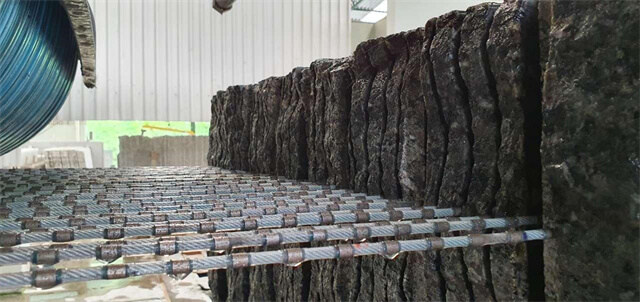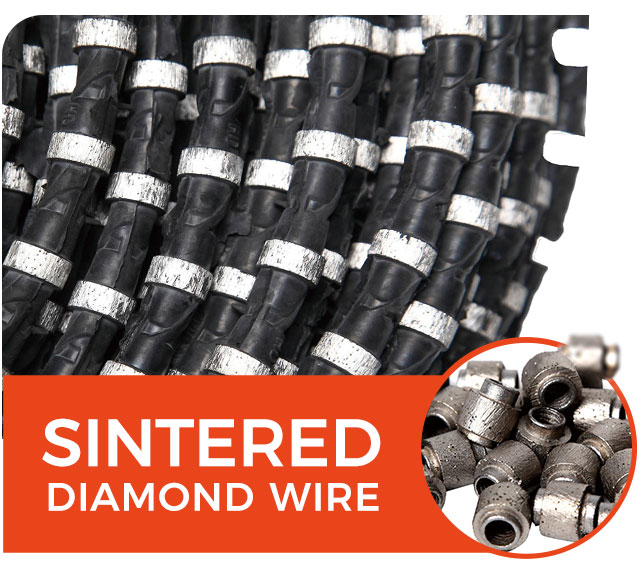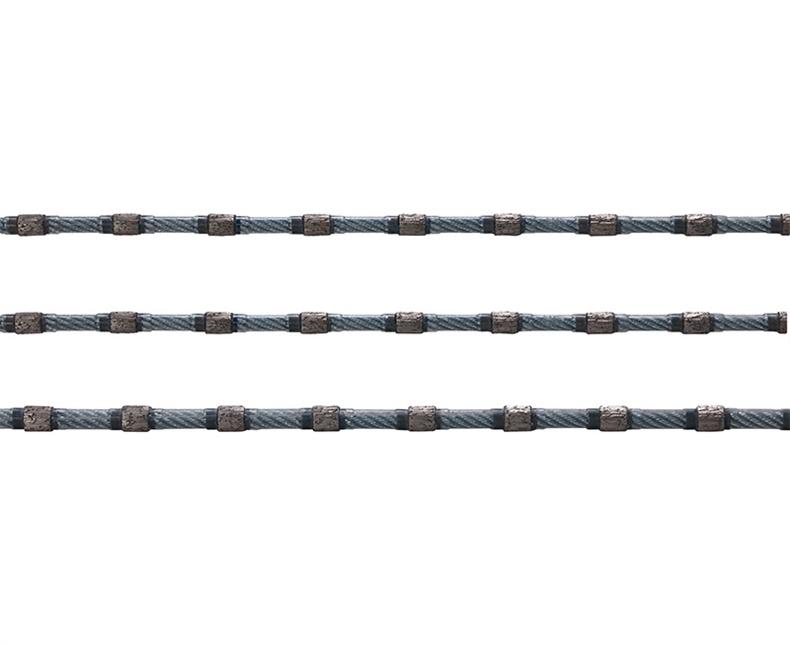Author:Huada Quarrying Machine FROM:Stone quarry machine manufacturer TIME:2024-11-24
The efficiency of cutting tools is a critical factor in various industrial applications, particularly in the manufacturing and construction sectors. Among these tools, diamond wire saws have gained prominence due to their superior cutting capabilities and durability. A significant aspect that influences the performance of diamond wire saws is the number of diamonds embedded on the wire. This article will explore how the density of diamonds affects cutting efficiency, examining factors such as cutting speed, precision, wear resistance, and overall productivity.

Diamond wire saws consist of a steel wire with diamond segments attached at intervals. These saws are primarily used for cutting hard materials, including concrete, stone, and other dense substances. The diamonds provide exceptional hardness and cutting ability, allowing for smoother cuts with reduced effort. The configuration and quantity of diamonds on the wire play a crucial role in determining how effectively the saw can perform its intended task.

One of the most immediate effects of increasing the number of diamonds on the wire is the enhancement of cutting speed. More diamonds mean increased contact points with the material being cut. This leads to a greater area being worked on simultaneously, which can significantly reduce the time required to complete a cut. However, it is essential to find a balance; too many diamonds can lead to excessive friction and heat generation, potentially causing the wire to wear out faster than it would with an optimal number of diamonds.
In addition to cutting speed, the number of diamonds on the wire also influences the precision of the cut and the quality of the surface finish. A higher density of diamonds typically results in smoother cuts, minimizing chipping and rough edges. This is particularly important in applications where aesthetics and dimensional accuracy are critical, such as in stone cutting for countertops or intricate architectural designs. Conversely, a lower density may produce a rougher finish, necessitating additional processing to achieve the desired smoothness.
The wear resistance of diamond wire saws is closely tied to the number of diamonds on the wire. An increased diamond density often translates to better wear resistance, as the distribution of cutting forces is more balanced across multiple diamonds. This means that individual diamonds experience less concentrated stress, reducing the likelihood of breakage or dislodging during operation. Consequently, wires with an optimal number of diamonds tend to last longer, resulting in lower replacement costs and increased operational efficiency.

When considering the impact of diamond density on cutting efficiency, one must also evaluate the overall productivity and cost-effectiveness of diamond wire saws. Higher cutting speeds and improved precision contribute to increased output, which can enhance profitability in commercial settings. Additionally, the longevity of the wire reduces downtime associated with frequent replacements and maintenance. However, it's important to consider the initial investment; wires with a higher diamond density may come with a higher upfront cost, but the long-term savings often justify this expense.
Selecting the appropriate number of diamonds on the wire depends on several factors, including the type of material being cut, the desired finish, and the operational conditions. For instance, cutting softer materials may not require as many diamonds compared to harder materials like granite or reinforced concrete. Furthermore, the specific application—whether it’s for precision cutting or high-speed production—will dictate the ideal diamond density. Therefore, it is crucial for operators to assess their specific needs and choose a configuration that maximizes cutting efficiency.
As technology advances, manufacturers are continually developing improved diamond wire saws with optimized diamond placements and innovative materials. Research into synthetic diamonds and advanced bonding techniques is paving the way for even more efficient cutting tools. These advancements promise to enhance cutting speed, precision, and durability further, making diamond wire saws an indispensable tool in modern industries.
The number of diamonds on a wire is a pivotal element that directly impacts the cutting efficiency of diamond wire saws. From enhancing cutting speed and precision to improving wear resistance and overall productivity, the density of diamonds plays a key role in determining how well a wire performs in various applications. By understanding these dynamics and choosing the right configurations, manufacturers and contractors can optimize their operations, ensuring effective cutting processes while maximizing cost-efficiency. As the industry continues to evolve, staying informed about the latest advancements will be essential for maintaining a competitive edge.